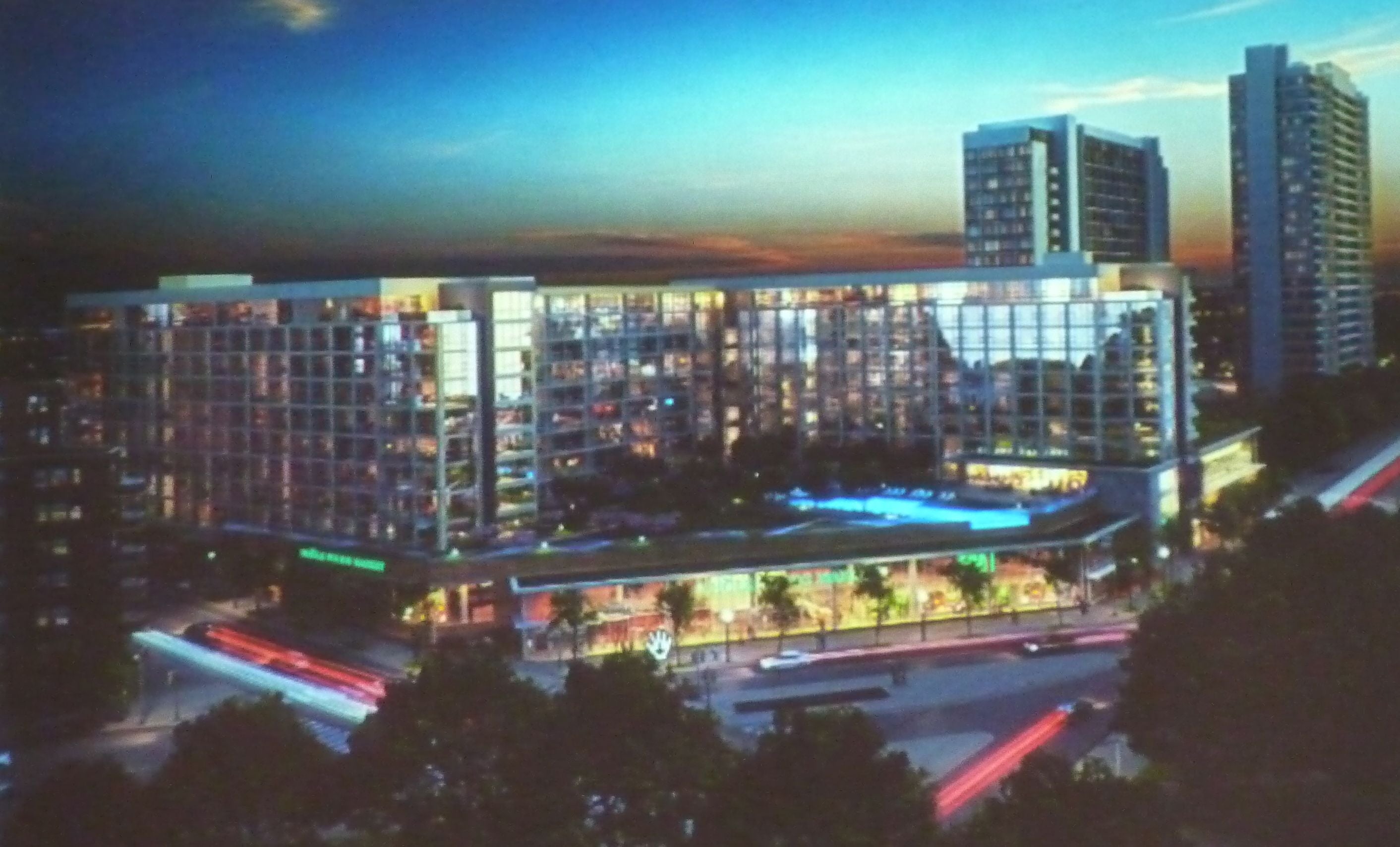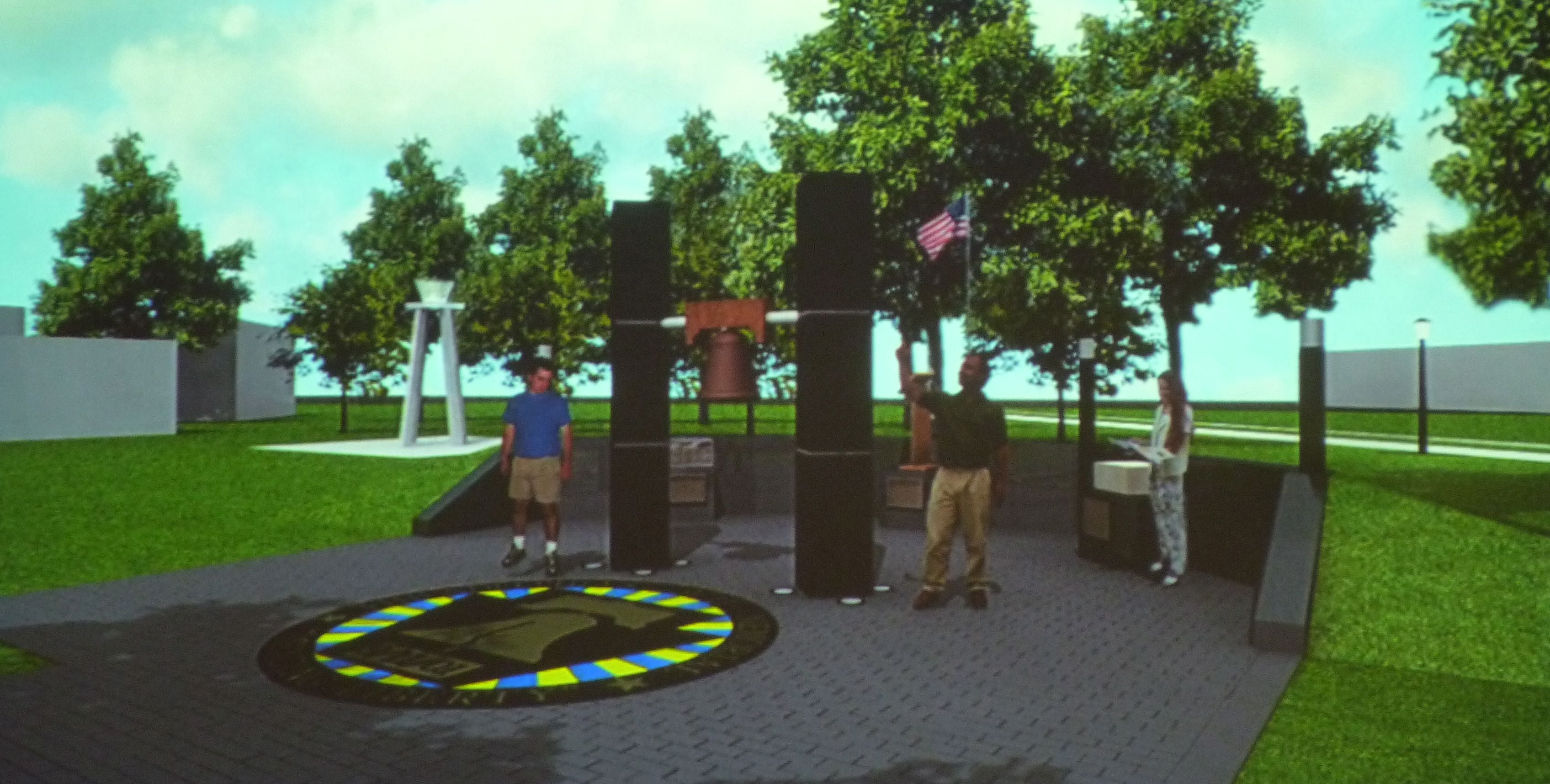Art Commission quashes 9/11 Memorial, OKs Rodin Square

The Philadelphia Art Commission got a crack at the Rodin Square mixed use development currently making the rounds, granting it conceptual approval at its Wednesday meeting. The morning’s other big news came with a return appearance by the team looking to install a 9/11 memorial in Franklin Square. After it refused an offer by Commission chair Sean Buffington to further address the Commission’s main concern — the too literal presence of the twin towers and a Liberty Bell that lie at the heart of the memorial — the Commission unanimously opposed going forward with the design.
While the Rodin Square development came before the Commission only because it fronts the Benjamin Franklin Parkway, which falls under the Commission’s jurisdiction, it was the contentious memorial that more strongly brought into play the reasons behind the Commission’s existence and the way it goes about implementing its responsibilities.
As the memorial’s designer, Jeffrey Little, tried again and again to sway the group — chiefly by saying that the design had garnered the approval of seemingly everyone but the Commission — Commission members gently but firmly held their ground. “It’s not a question of like,” said Commissioner Moe Brooker, “but of quality. We have to give the public that what we consider worthwhile. The idea is fine,” he continued, suggesting that it is the realization of the concept that is lacking. Everyone remembers where they were when the towers fell, Brooker said. “That sense of impact must be part of the work.”
Commissioner Emmanuel Kelly named examples of more successful 9/11 memorials: Philadelphia’s own rusted, twisted relic on the Schuylkill, designed by Wells Appel Landscape Architects, and Michael Arad’s fountains-cum-voids at Ground Zero.
In his presentation, Little pointed out that he had satisfactorily addressed the Commission’s other concerns: changing the pavers so that they better match those of the park, creating a berm behind the artifact display, and removing an image of the flag from the design’s centerpiece. Several Chinatown representatives showed up to voice their support of the project. Still, said Buffington, the Art Commission has “been charged by the city to pass [its own] judgment and give [its own] input,” whether or not it seemed fair.
In reviewing “Rodin Square,” Commissioners adapted a much more favorable outlook, with Commissioner Karen Davis the only one to question what she called a “pedestrian” design and which she suggested was bulky for its site. Commissioner José Almiñana, on the other hand, praised the effort, saying it offered a “very good solution for a very difficult problem.”
As has been well-documented, the project involves the demolition of an existing Best Western hotel on the 2100 block of Spring Garden Street and the erection of two apartment towers, a parking structure, a relocated (and nearly doubled) Whole Foods, and a host of small retail spaces.
James Voelzke of MV&A Architects, the D.C.-based firm helming the project, presented a zippy and complete look at the project from a planning perspective but offered scant design details. He spoke of how the site will be “activated” on its entire perimeter, even though one of those sides will be an “alley” created for vehicular access to the parking lots and loading docks.
Likening tthe Parkway to New York’s Central Park West — didn’t he get the memo about the Champs-Élysées? — Voelzke noted that the parcel’s situation is its biggest asset. To acknowledge that, he said that the towers would “fold” back to allow for viewsheds, come in at lower FAR than mandated, meet height restrictions, and include copious open space. Much of the project will be glass — including the by now standard flat bays on the towers and the facade of the Whole Foods which, he said, will stretch nearly 30 feet high.
Commissioner Almiñana questioned the wisdom of so much glass when it comes to sunny days (“you’ll have to do some serious landscaping,” he suggested) and several commissioners requested that the use of stucco for the rear portions be reconsidered. Commissioner Brooker said he was looking for a “sense of softening, something more organic” all around. In giving the conceptual nod, the Commission asked that these quibbles be considered.
The rest of the morning’s cases were relatively minor.
The Commission gave final approval to a gold aluminum sculpture for a new SWAT/K-9 police facility in the Northeast; a new bridge at 40th Street and Montgomery Avenue; and exterior alterations to the Wyndham Hotel in Old City, after the respective applicants returned with designs that satisfactorily incorporated the Commission’s suggested changes. It also granted conceptual approval to an addition to the Mill Creek Recreation Center, asking that better consideration be given to color, weight, and mass so as to de-bunkerize the design.

WHYY is your source for fact-based, in-depth journalism and information. As a nonprofit organization, we rely on financial support from readers like you. Please give today.



